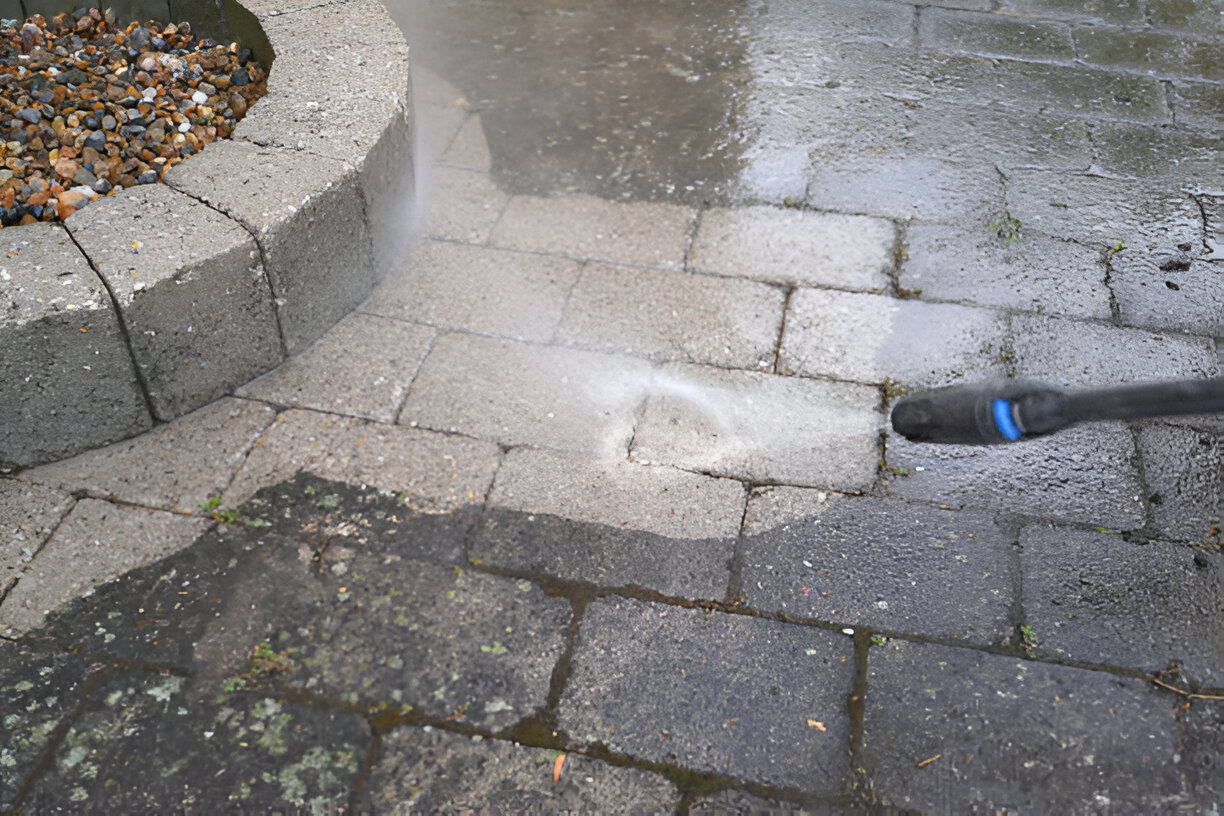Concrete surfaces, from driveways to patios, are exposed to a range of environmental factors that can cause wear and tear over time. To extend their lifespan and enhance their appearance, many homeowners turn to sealing. But before applying a concrete sealer, there’s an important preparatory step that can significantly impact the effectiveness of the sealing process: power washing. In this article, we’ll explore why power washing is often recommended before sealing concrete and how it can affect the outcome of your project.
Understanding Concrete Sealing
Concrete sealing is a process where a protective coating is applied to the surface of concrete to shield it from moisture, stains, and wear. Sealing can enhance the color and texture of the concrete, prevent cracking, and make the surface easier to clean. There are various types of concrete sealers, including:
- Acrylic Sealers: Provide a glossy finish and are relatively easy to apply.
- Epoxy Sealers: Offer a durable, long-lasting finish, ideal for high-traffic areas.
- Polyurethane Sealers: Known for their high durability and resistance to abrasion and chemicals.
- Penetrating Sealers: Absorb into the concrete and provide protection from within, rather than forming a surface film.
Choosing the right sealer depends on the type of concrete, the desired finish, and the environmental conditions.
The Importance of Power Washing
Power washing, also known as pressure washing, involves using a high-pressure stream of water to clean surfaces. This process is particularly effective for removing dirt, grime, mold, mildew, and other contaminants that can accumulate on concrete surfaces. Here’s why power washing is crucial before sealing concrete:
- Removes Contaminants: Concrete surfaces can attract a variety of contaminants, including oil stains, algae, moss, and dirt. These substances can interfere with the adhesion of the sealer, leading to an uneven application or premature failure of the sealer. Power washing helps to eliminate these contaminants, providing a clean slate for the sealer to adhere to.
- Enhances Adhesion: For a sealer to bond properly with concrete, the surface needs to be clean and free of any residues. Power washing not only cleans the surface but also opens up the pores of the concrete, which allows the sealer to penetrate and adhere more effectively. Without this preparation, the sealer may not bond correctly, reducing its effectiveness and longevity.
- Improves Aesthetic Appeal: Over time, concrete can become discolored and stained. Power washing can restore the surface to a more uniform color, enhancing the overall appearance. This can be particularly important if you’re applying a clear or colored sealer that is designed to enhance or change the appearance of the concrete.
- Prevents Future Issues: Applying sealer over a dirty or contaminated surface can trap debris and moisture underneath the sealer. This can lead to problems such as bubbling, peeling, or delamination. By power washing before sealing, you reduce the risk of these issues, ensuring a more durable and long-lasting finish.
How to Power Wash Concrete Effectively
To ensure that power washing is done effectively, follow these steps:
- Prepare the Area: Clear the area of any furniture, plants, or other items that could be damaged by the high-pressure water. Cover any plants or delicate surfaces with tarps or plastic sheeting to protect them from water and cleaning solutions.
- Choose the Right Equipment: Use a power washer with a pressure rating suitable for concrete surfaces, typically between 3,000 and 4,000 psi. Select a nozzle with a wide spray pattern to prevent damage to the concrete.
- Pre-Treat Stains: For stubborn stains, such as oil or grease, apply a concrete cleaner or degreaser before power washing. Follow the manufacturer’s instructions for application and dwell time.
- Power Wash: Start from one end of the surface and work your way across in a systematic pattern. Maintain a consistent distance from the surface, usually around 12 to 18 inches, to avoid damaging the concrete. Use overlapping strokes to ensure even coverage.
- Rinse Thoroughly: After power washing, rinse the surface thoroughly to remove any residual cleaning agents and debris. Allow the concrete to dry completely before applying the sealer.
- Inspect the Surface: Once dry, inspect the concrete for any remaining stains or areas that may need additional cleaning. If necessary, repeat the power washing process.
Alternatives to Power Washing
While power washing is highly effective, there are alternatives if it’s not feasible or if you have concerns about using high-pressure water:
- Manual Scrubbing: For smaller areas or less severe contamination, manual scrubbing with a stiff brush and a concrete cleaner can be effective.
- Chemical Cleaners: Specialized concrete cleaning agents can help break down stains and contaminants without the need for power washing.
- Steam Cleaning: In some cases, steam cleaning can be used as an alternative to power washing, especially in areas where water usage is a concern.
Conclusion
Power washing is a crucial step in preparing concrete surfaces for sealing. It ensures that the concrete is clean, enhances the adhesion of the sealer, improves the appearance of the surface, and helps prevent future issues. By taking the time to power wash your concrete before sealing, you can ensure a more durable, effective, and aesthetically pleasing finish. Whether you’re tackling a driveway, patio, or any other concrete surface, this preparatory step can make a significant difference in the long-term performance and appearance of your sealed concrete.
